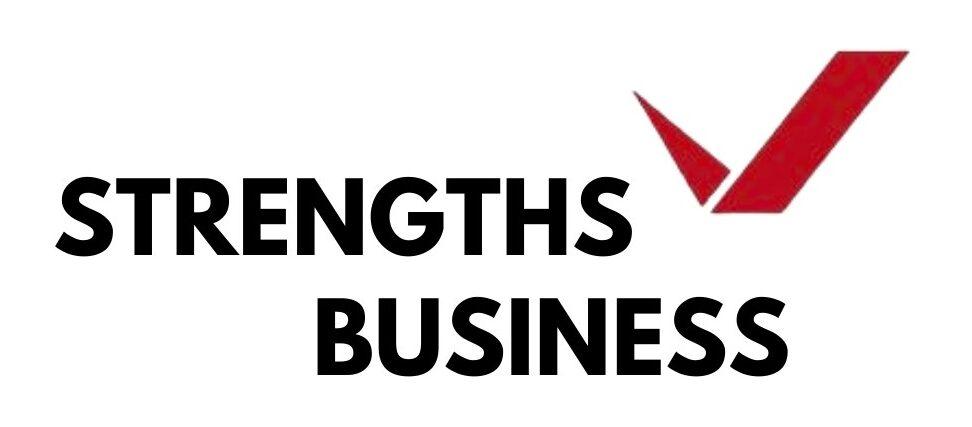
Viya Chen
PCC Professional Certified Coach, Business and Leadership Coach, MA, ACTP Learning Leader
Senior Executive, Fortune 100 Brand and Marketing Communication for 20 years
Viabiz Asia, Singapore and Taiwan
Neuroscience shows that instinct performs a leading role in the making of most decisions. The research has shown imaginative play is one of the most direct means of activating our creativity and problem-solving abilities.
A gut feeling is a sensation that instantly appears in our sub-consciousness without fully aware of the underlying reasons for this occurrence, which can shape tendency to pursuit goals that are about performance, or goals that are about progress. We will either feel empowered or de-motivated when we are pursuing our goals.
Empowerment = Engagement + Will Power
Demotivation = Disengagement + Powerless
The power of positive thinking can create empowerment, while the feeling of intimacy develops the sense of engagement. By contrast, there would be times when things wouldn’t work out and not sufficiently satisfying. Our intuitive feeling might convey demotivation to our brain, which would discourages our heart in the pursuit of our goals. Then, our guts would feel powerless and unprogressive.
The processes of experiencing empowerment will initiate a structure for the creation of positive energy to lead to business and life decisions, while the sense of demotivation will discourage the intention of trying a new way or commit to any new change.
We all have different ‘be-good’ performance goals or ‘get-better’ mastery goals. The goals keep us moving forward. When we pursue performance goals, our energy is directed at achieving a particular outcome, which often tied closely to our sense of self-worthiness and validation – it makes us look and feel smart, talented, and desirable. Performance goals are characterized by an all-or-nothing quality – you either reach the goal or you don’t. And then we judge ourselves according to whether or not we are successful. On the other hand, the desire to get better – to develop or enhance our skills and abilities – is a mastery goal. We judge ourselves in terms of the progress we are making. Am I improving? Am I learning? Am I moving forward at a good pace? It’s less about one individual performance, but more about our performance over time.
The definition of “Demotivation” is the feeling that someone loses his/her enthusiasm and interest. Often when people focus hard on a problem, they become stressed about it. A de-motivated thinker normally has the perspectives that they do not have the freedom from unnecessary constraints, not have the ability to move projects forward, not able to manage their own time, not being recognized from their colleagues and peers, or cannot find the opportunity for personal growth.
Occasionally we feel ‘stuck’ with a situation in our life and can’t see a way forward. If you can discern the perspective and reframe it, then you can free yourself up to find new solutions and move on.
Self-Application
Managers do things right. Leaders do the right thing. Inspired leaders do the right thing for the right reason.
Many people, including Morgan McCall, author of High Flyers, and Daniel Goleman, author of Emotional Intelligence, believe that Accurate Self-Insight is a critical executive competency. It measures the degree to which a person can sense his or her own strengths and weaknesses and how accurately he or she can evaluate an interaction while it is progressing (Goleman, 1995, McCall, 1997).
Empowerment is the sense in which you can integrate external power with internal power. Janet O. Hagberg has identified different stages of personal power in his book “Real Power”. We are on the continuum journey between powerless and powerful. The hallmark of the first stages of Real Power is the capacity to know and use your skills, take risks, act, make things happen. This power comes from the outside. It is external power.
SIX Stages of transforming External Power Into Internal Power
The first 3 stages of External Power are (1) Powerlessness (2) Power by Association (3) Power by Achievement. This Internal Power comes from inside out as the stage of: (4) Power by Reflection (5) Power by Purpose (6) Power by Wisdom. When we activate internal power, we are no longer limited by our own minds and imaginations. We are moving to our true passion and the courage to make significant changes to our life. People find deep meaning, and then exude wisdom by shifting the perspective from feeling de-motivated to being motivated.
Coaching Application
The role of a coaching is to motivate people to improve their performance. However, we need to aware that motivation is not one-size fits all. Each individual has a uniquely and distinctly motivational type. Everyone feels motivated differently because the feeling of different stage of power in their life. What motivates one person can de-motivate another. There is no single motivational type that can be “better” than any other. However, when we are working on some goal achievement, client will be empowered by knowing where the goal comes from:
(1) Know what is influencing our clients
(2) Know what our clients believe about their abilities
(3) Know what trigger them to embrace the potential for change
(4) Help them to set up the right environment and supports
(5) Use triggers to tap their unconscious belief and internal power
The other way to empower a client is through the technique of ’playing’, which creatively open the client’s mind for other possibilities. If change is key to life success, and if visualization is the door to empower strengths, then the next question is how one could create a coaching atmosphere that is conductive to “visualize” the possibilities, and turn them into players.
The most effective way of opening up the possibilities is to think about what the future looks like. It’s personal, engaging, and interactive. It is filled with light, color, smell and sound. Some of the things that a coaching process can do are to create a personal and relaxing atmosphere via:
• Allocating significant time in which clients are explicitly encouraged to talk about their dream or future
• Creating or giving clients a support system that are conductive to share their goals in business or life
• Developing some playing, visionary, visual or game tools to inspire clients to create a story about their future.
The other simplest strategy for helping a client reframe a particular perspective is active listening. The natural act of providing a space where a client can be really listened to is often enough for them to explore the perspectives that lie underneath their actions. When the coach can offer a non-judgmental space, help clients to value their strengths or find supports, clients feel empowered by their decision. Any comment will have the risk to de-motivate clients, especially suggest client “living my values not your own”. We should trust the coaching processes and believe that clients are the experts in their life. By providing a trusting space and really listening, we can guide our clients to explore the countless perspectives of their potentials, inspire empowerment and lead them to accomplish their goals.
Strengths-based or AI (Appreciation Inquiry) methods is the other strategy to motivate and value our clients’ developing stories. Some motivating questions including:
• What’s working well?
• What’s good about what you are currently doing?
• What’s your last peak performance?
• What have you learnt from your success?
Structures
Do what you feel passionate of, enjoy an amazing lifestyle, take your life or business to next level – Be empowered, be the best version of you.
Vision is an imagery of inspiration and a created image of our desired future. You cannot control the future, but you can plan for it. Create a clearly defined picture of what you really want in life. This picture should be so vivid that seeing it in your imagination. Visualize the end at the beginning, which help us to navigate the shift to play.
VISION is an intuitive picture that matches our passion. Creativity is often defined as the ability to bring into existence something new, different or inspired possibilities. This picture should be so vivid that seeing it in your imagination energizes you right now. Visualization allows the client imagine themselves without fears, barriers, or restraints. Because of its tangibility, it makes us feel empowered to shape the direction to the future.
A coach needs to help client to think big, but start small. Look for reproducible strategies. When people have a dream or a desire, we are able to visualize the best goal and implement it. “Even if you hit a home run once, you won’t win the game unless you can do it again and again and again”. (Lowe, Tamara. Get Motivated, 2009, P230)
Reflection
• What network can I connect with to help me feel empowerment to achieve my goal?
• What groups can I join to support me and fuel my motivation?
• Who can encourage me to stay on track and help make me feel empowered?
• What have we learned about play, and how can play help others?
• How can I overcome adversity and focus on feeling empowered every day that will cause me to make progress toward accomplishing my goal?
• How will I overcome these obstacles and the feeling of de-motivation?
• What existing systems and structures can I utilise to help me feel empowered and reach my goal?
• What is the stage of my real power stage? Do I apply external power, or in the journey of activating my internal power?
References
• Lowe, Tamara. Get Motivated: Overcome any obstacle, achieve any goal, and accelerate your success with motivational DNA, Doubleday, USA, 2009
• Cholle, Francis P. The Intuitive Compass. Why the Best Decisions Balance Reason and Instinct. San Francisco, A Wiley Imprint, 2012
• Appreciative inquiry. http://en.wikipedia.org/wiki/ Appreciative_ inquiry
• Lowe, Tamara. Get Motivated: Overcome any obstacle, achieve any goal, and accelerate your success with motivational DNA, Doubleday, USA (2009)
• Janet O. Hagberg. Real Power: Stages of Personal Power in Organizations, Third Edition
• ICA, Reframing Perspective, 2012
Interested in learning more about business and executive coaching, please contact us at:
